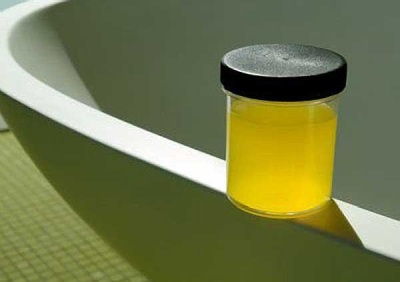Turbid urine in a child
Attentive parents immediately notice changes in the state of their child. But, seeing that the urine of the baby has become muddy, with impurities or flakes, it’s too early to experience. Let's see if it can be in a healthy child and what it testifies to.
Normal urine clear?
Normal fresh baby urine is usually a clear yellow liquid.
However, turbidity is not always a sign of diseases and disorders in the child’s body. Even in healthy babies, it becomes cloudy when it is at room temperature for a long time. Salts that may be contained in it become a cloudy precipitate.
In diseases, turbidity is caused by bacteria, leukocytes, salts, and mucus that enter it. It may also change the color and smell.
In infants
- Turbidity of urine in a newborn baby is considered normal, but just a few days after birth, it becomes transparent.
- In infants who are given complementary foods, it may also lose its transparency, but this condition quickly passes.
- In the period of potty training, turbidity can be observed in the morning portion. It is associated with a long interval between emptying, if the baby does not urinate at night.
Possible reasons
Parents may notice turbidity of urine in the baby in the case of:
- Dehydration caused by vomiting, insufficient drinking regimen, diarrhea, prolonged exposure to hot conditions, and other factors.
- Sharp changes in nutrition.
- Colds and viral infections accompanied by fever.
- Severe burns.
- Inflammatory processes of the urinary system.
- Parenchymal or mechanical jaundice.
- Poor hygiene baby.
- Long-term use of antibiotics or vitamins.
- Appendicitis (turbidity associated with abdominal pain and deterioration of the overall condition of the crumbs).

Sediment
The presence of sediment in the urine of a child should be alerted, since it indicates an increased risk of stone formation due to the large amount of salts. In rare cases, it may indicate fatty hepatosis. Congenital features of the functioning of the excretory system of the baby can also lead to the appearance of sediment.
In addition, if sediment forms in the urine, it may be a sign of diabetes. In this case, there is a sweet smell.
Is it possible to analyze at home?
If parents do not have the opportunity to take baby urine for analysis, they can independently determine the cause of turbidity. It should be noted that the result of such a home inspection will not be 100% reliable, so as soon as the opportunity arises, the baby’s urine should be immediately checked in the laboratory. The analysis of turbidity at home can reassure moms in cases where food was the cause of such changes.
After collecting the first morning portion of urine in a small glass container, it should be put in a pan filled with water. Heated the water in the pot, you need to watch the contents of the jars.
- If turbidity remains unchanged, this may be a sign of an inflammatory process in the child’s body.
- If urine looks more transparent, oxalates are the cause of its cloudy appearance.
- If the contents of the jar become even more turbid, it contains a lot of phosphates, and it is they who are the cause of this kind of it.
In the first case, you should certainly pass the urine of the child to the laboratory for analysis. In the second and third variants, there are no reasons for experiencing.
Tips for parents
The reliability of the results of the analysis is greatly influenced by the sample collection time, the cleanliness of the collection container, and the storage time before the test, therefore follow the rules:
- It is advisable to collect the morning portion after hygiene procedures.
- The collection container must be sterile.
- Urine should be delivered to the laboratory no later than 1-2 hours after collection.
In addition, take care of adequate drinking regime of the baby. Do not allow cases when a child can not urinate for a long time. Also pay enough attention to the hygiene of the crumbs.











